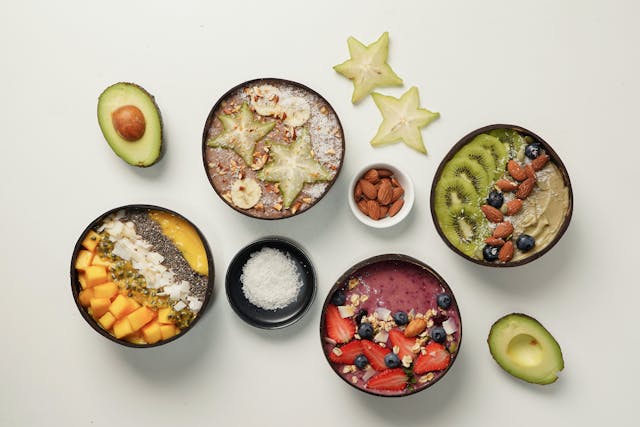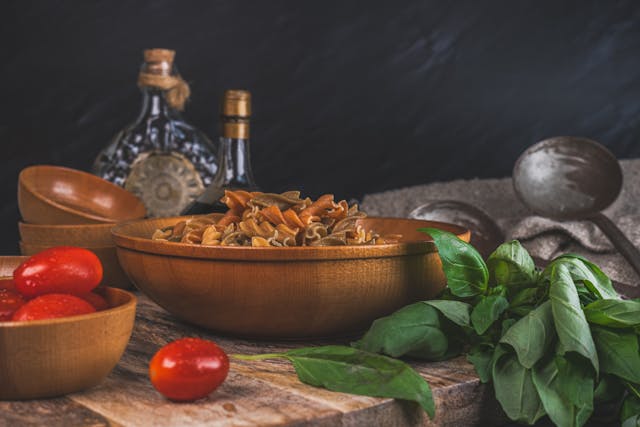
Full Course Meal
A full course meal offers a delightful culinary journey, presenting different flavors, textures, and aromas in a structured sequence.
From appetizers to desserts, a full course meal can range from three to seven or more courses, allowing diners to experience a variety of dishes.
Whether for a special occasion or a memorable family gathering, planning a full course meal involves creativity and balance. Here’s everything you need to know on how to create a full course meal.
Understanding the Structure of a Full Course Meal
A typical full course meal consists of several key elements served in a specific order:
- Appetizer – Light, small dishes to awaken the palate (e.g., soups, salads, or bite-sized appetizers).
- Main Course – Hearty and substantial, usually the highlight of the meal, featuring a protein with complementary sides.
- Side Dish – Accompanies the main course, enhancing flavors without overpowering it.
- Salad – Often served after the main course to cleanse the palate.
- Cheese Course – An optional course that provides savory flavors and can be served with fruit or nuts.
- Dessert – Sweet dishes that conclude the meal, leaving a satisfying finish.
- Beverages – Pairing each course with complementary drinks, like wine or sparkling water, can enhance the meal’s experience.
You can adjust the number of courses based on the occasion and your guests’ preferences.
Choosing a Theme for Your Full Course Meal
Selecting a theme can guide your ingredient choices and create a cohesive dining experience. Here are some popular theme ideas:
- Seasonal – Use fresh, seasonal ingredients to create a vibrant menu.
- Cultural – Explore a specific cuisine, such as Italian, French, or Japanese, to transport guests to a different part of the world.
- Special Occasion – Consider a festive theme for holidays, like Thanksgiving or Valentine’s Day, with dishes that reflect the occasion’s spirit.
Choosing a theme helps you focus your recipe choices and creates a more harmonious dining experience.

Planning Each Course
Appetizer
The appetizer should be light yet flavorful, as it sets the tone for the meal. Consider options like bruschetta, a light vegetable soup, or a fresh seafood starter. Aim for small portions so guests don’t fill up before the main course.
Main Course
The main course is often the centerpiece of a full course meal. Whether it’s a roasted chicken, grilled fish, or a vegetarian risotto, the main dish should be flavorful and well-balanced. Include a protein, a starch, and a vegetable to satisfy different tastes and ensure a balanced plate.
Side Dish
Side dishes complement the main course and enhance its flavors. A side salad, roasted vegetables, or garlic mashed potatoes can add variety and texture to the meal. When planning side dishes, ensure they don’t overshadow the main course.
Salad
In many traditional multi-course meals, the salad is served after the main course to cleanse the palate and prepare the guests for dessert. A simple green salad with a light vinaigrette is an ideal choice, offering a refreshing break.
Cheese Course (Optional)
For an elegant touch, a cheese course with assorted cheeses, nuts, and fruits can be added after the salad. It offers a savory pause before dessert and allows guests to enjoy contrasting flavors.
Dessert
End the meal on a sweet note with a decadent dessert, such as chocolate mousse, a fruit tart, or classic crème brûlée. Make sure the dessert isn’t overly heavy, so it doesn’t overwhelm guests after a multi-course meal.
Beverages
Pairing beverages with each course enhances the meal. For example, serve a crisp white wine with sea food appetizers and a bold red with the main course. Offer a sweet wine or coffee with dessert to complete the experience.
Tips for Organizing a Full Course Meal

Planning a full course meal requires organization to ensure each dish is ready to serve at the right time. Here are a few tips:
- Prepare in Advance: Pre-cook or prep components of each dish to reduce time in the kitchen during the meal. Some courses, like soups and desserts, can be prepared the day before.
- Timing is Key: Serve each course promptly to keep the flow of the meal smooth. Avoid long gaps between courses to maintain guests’ interest and appetite.
- Serve Small Portions: With multiple courses, keep portions small to allow guests to enjoy each dish without feeling too full.
- Use Appropriate Tableware: Each course should be served on separate plates or bowls, ideally with distinct tableware to match the mood of each dish.
Benefits of a Full Course Meal
Creating and enjoying a full course meal is a wonderful way to make any gathering feel special. It allows guests to savor each dish slowly and experience a variety of flavors.
The different courses also help enhance digestion, as each one is typically lighter than the last. Additionally, a full course meal encourages conversation, as guests can share their thoughts on each dish.
In Summary
A full course meal is more than just a collection of dishes; it’s an experience that brings people together and celebrates the art of dining.
By choosing a theme, planning each course carefully, and preparing in advance, you can create a memorable meal that delights your guests.
Enjoy the process of crafting a multi-course meal, and let each course tell a story through flavor, presentation, and creativity.
Read Also: Everything to Know about Stomach Ulcers







